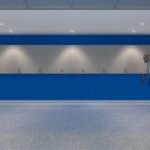Roads to Progress: Milestones in History

by Jeff Lytle
Since 1979 I’ve seen plenty of change and progress in Naples and the rest of Southwest Florida.
Back then, “Naples” meant the area within the city limits and it dominated Collier County. Now the Naples brand is attached to development as far north as Mediterra and the city is dwarfed by all that.
The common thread to all of it is transportation – mostly roads. They either allowed people and development to reach new frontiers, or roads were required after people and development demanded more capacity.
I recall one period in the 1990s when supply and demand for roads got so broken that no new ones were built in Collier for three years. I recall the newspaper where I worked – back in the days of original, aggressive reporting – shed light on why traffic was so horrible and how nobody in charge would take ownership.
Meanwhile, leaders to our north, in Lee County, kept on doing what they did and still do so well – build roads to stay a step ahead of growth in all the right places.
 Against that background, let’s cruise memory lane and size up important additions to our road network over the years.
Against that background, let’s cruise memory lane and size up important additions to our road network over the years.
Starting small, I remember when Pine Ridge Road blasted eastward through the woods from Airport-Pulling Road to Golden Gate. A similar impact was realized when Golden Gate Parkway, then nicknamed Coastland Boulevard, came west to U.S. 41 North.
On much larger scales, the widening of Immokalee Road to Ave Maria and Vanderbilt Beach Road to Golden Gate Estates set the stage for the mega boom we see in those areas today.
Livingston Road served as a special milestone because it opened virgin territory. When it debuted, people would go for old-fashioned Sunday drives, or sneak onto unfinished sections, to see places they had seen only from aerial photos. And it brought Bonita Springs within 10 minutes of North Naples.
The new Logan Boulevard extension does the same thing, again, a few miles east of Livingston – known as Imperial and Three Oaks parkways in Bonita and Estero. Logan earns an asterisk for being the truly scenic (and quiet) route, meandering through wildlife preserves at leisurely speeds and no heavy trucks.
Expansion of U.S. 41 East to Collier Boulevard showed how a wider road could deliver on traffic flow and efficiency, as promised. The widening of Goodlette-Frank Road, at least for a while, showed how well a local road close to residential and commercial development could work. You could fly from one end to the other — before growth ate up the added capacity.
And U.S. 41, the obvious forerunner of everything, commands a footnote for its feat of engineering through swamp and rock – long before mosquito control.
On another historic note, it is interesting how none of the origins of Hamilton Harbor Yacht Club came to light in October when news of its sale became publicized.
 News accounts rightly connected the yacht club and marina on Naples Bay with Old Collier Golf Club when Collier Enterprises sold both at about the same time to separate companies of huge wealth.
News accounts rightly connected the yacht club and marina on Naples Bay with Old Collier Golf Club when Collier Enterprises sold both at about the same time to separate companies of huge wealth.
More than 30 years ago, Hamilton Harbor was known as Sabal Bay Marina. It was to be a bayfront amenity with gulf access via Gordon Pass for the sprawling Sabal Bay residential/commercial/golf community to the east. The marina was within the city; the rest of the project was in the county.
The marina was to be massive, requiring major wetland destruction, across Naples Bay from Port Royal, where residents feared visual and water pollution and heavy boat traffic. They generated an ugly political furor which spawned the area’s first political action committee, forced a key City Council hearing to shift to Naples High School and delayed today’s much more modest marina for 13 years with lawsuits and administrative appeals. The rest of the Sabal Bay project changed hands twice and now is Isles of Collier Preserve.
What’s additionally interesting is how the marina joins a list of local projects that many people feared in advance – only to appreciate later.
The Golden Gate Parkway overpass at Airport-Pulling Road was resisted by many as a sign of urban overbuild. Actually, it turned out to be a bold solution to a pressing problem.
An expansion of Coastland Center Mall was protested as a destroyer of the Lake Park neighborhood next door. Actually, a little traffic engineering made it a beacon of the community.
St. Matthew’s House was opposed as a magnet for the homeless and crime. It is now a true friend.
And believe it or not, the first of Naples’ two Ritz-Carltons was dreaded by some otherwise astute people as the killer of existing local tourism, which it instead uplifted.




Leave a Reply
Want to join the discussion?Feel free to contribute!